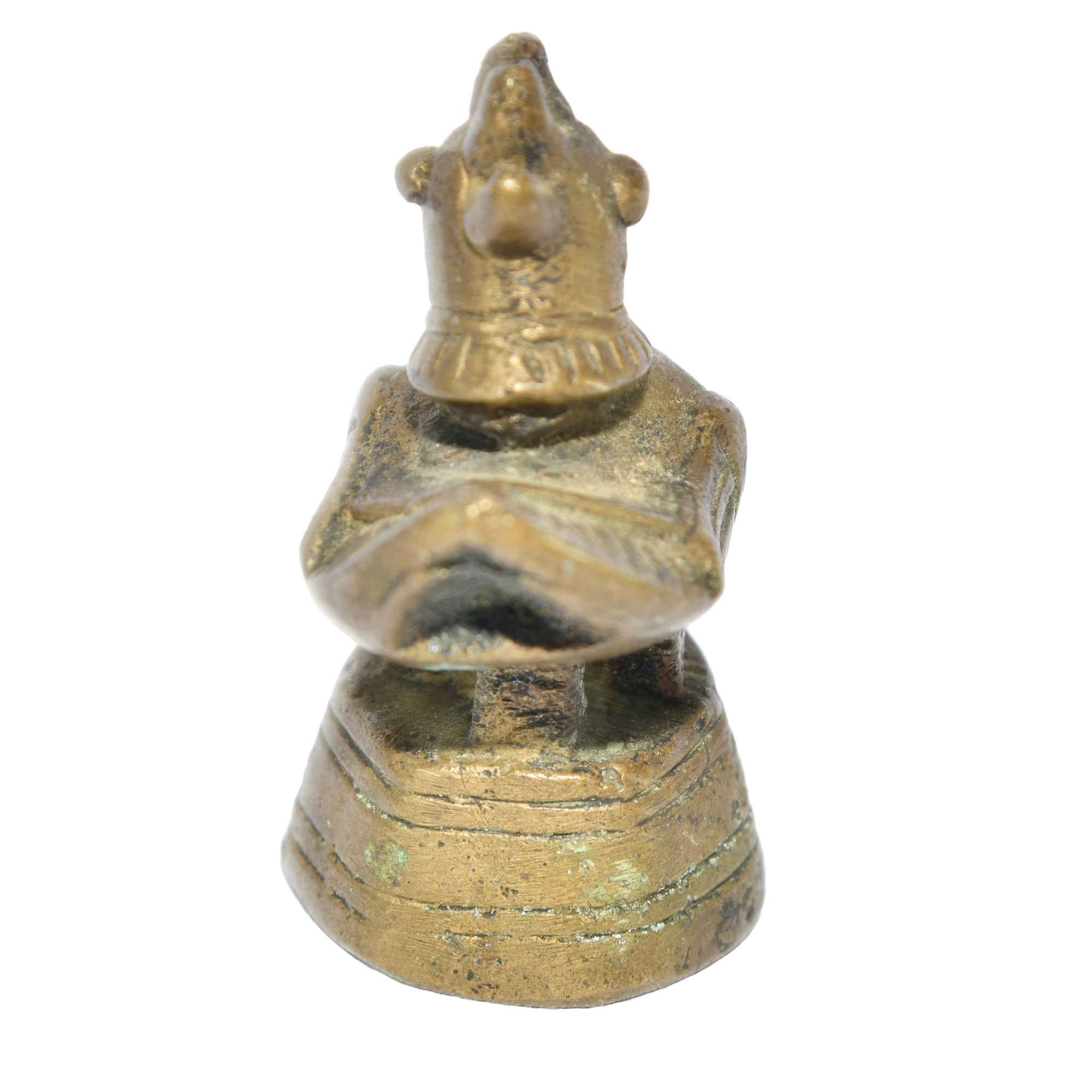A set of four 19th century Burmese Hintha bird opium weights
Hintha bird opium weights are Burmese artifacts that reflect the historical trade practices and cultural symbolism of Myanmar (formerly Burma). These weights, primarily cast in bronze, were used to measure opium, a significant commodity in the region's economy.
The weights are typically shaped like the Hintha bird (a Brahmani duck), a symbol of grace and purity in Burmese tradition. While the majority depict the Hintha bird, variations exist, including lion and other animal forms. Early examples, dating back to the 16th and 17th centuries, featured pumpkin-shaped bases.
Initially designed for opium trade, these weights were also used for general commerce, measuring various goods and materials. They are now primarily collected as cultural artifacts and displayed in museums.
The British annexation of Burma in 1885 led to the introduction of standardized iron weights, officially ending the production of bronze weights. However, the creation of animal-shaped brass weights continued unofficially into the 20th century, demonstrating their enduring cultural value.
1. 10.54 ticals, 173g, 6cm high, 4cm wide, 4cm deep.
2. 7.56 ticals, 124g, 5cm high, 3.5cm wide, 2.5 cm deep.
3. 4.69 ticals, 79g, 4.3cm high, 2cm wide, 2cm deep.
4. 2.80 ticals, 46g, 3.5cm high, 2cm wide, 1.7cm deep.
Condition is good for their age see photos
Hintha bird opium weights are Burmese artifacts that reflect the historical trade practices and cultural symbolism of Myanmar (formerly Burma). These weights, primarily cast in bronze, were used to measure opium, a significant commodity in the region's economy.
The weights are typically shaped like the Hintha bird (a Brahmani duck), a symbol of grace and purity in Burmese tradition. While the majority depict the Hintha bird, variations exist, including lion and other animal forms. Early examples, dating back to the 16th and 17th centuries, featured pumpkin-shaped bases.
Initially designed for opium trade, these weights were also used for general commerce, measuring various goods and materials. They are now primarily collected as cultural artifacts and displayed in museums.
The British annexation of Burma in 1885 led to the introduction of standardized iron weights, officially ending the production of bronze weights. However, the creation of animal-shaped brass weights continued unofficially into the 20th century, demonstrating their enduring cultural value.
1. 10.54 ticals, 173g, 6cm high, 4cm wide, 4cm deep.
2. 7.56 ticals, 124g, 5cm high, 3.5cm wide, 2.5 cm deep.
3. 4.69 ticals, 79g, 4.3cm high, 2cm wide, 2cm deep.
4. 2.80 ticals, 46g, 3.5cm high, 2cm wide, 1.7cm deep.
Condition is good for their age see photos
Hintha bird opium weights are Burmese artifacts that reflect the historical trade practices and cultural symbolism of Myanmar (formerly Burma). These weights, primarily cast in bronze, were used to measure opium, a significant commodity in the region's economy.
The weights are typically shaped like the Hintha bird (a Brahmani duck), a symbol of grace and purity in Burmese tradition. While the majority depict the Hintha bird, variations exist, including lion and other animal forms. Early examples, dating back to the 16th and 17th centuries, featured pumpkin-shaped bases.
Initially designed for opium trade, these weights were also used for general commerce, measuring various goods and materials. They are now primarily collected as cultural artifacts and displayed in museums.
The British annexation of Burma in 1885 led to the introduction of standardized iron weights, officially ending the production of bronze weights. However, the creation of animal-shaped brass weights continued unofficially into the 20th century, demonstrating their enduring cultural value.
1. 10.54 ticals, 173g, 6cm high, 4cm wide, 4cm deep.
2. 7.56 ticals, 124g, 5cm high, 3.5cm wide, 2.5 cm deep.
3. 4.69 ticals, 79g, 4.3cm high, 2cm wide, 2cm deep.
4. 2.80 ticals, 46g, 3.5cm high, 2cm wide, 1.7cm deep.
Condition is good for their age see photos

















